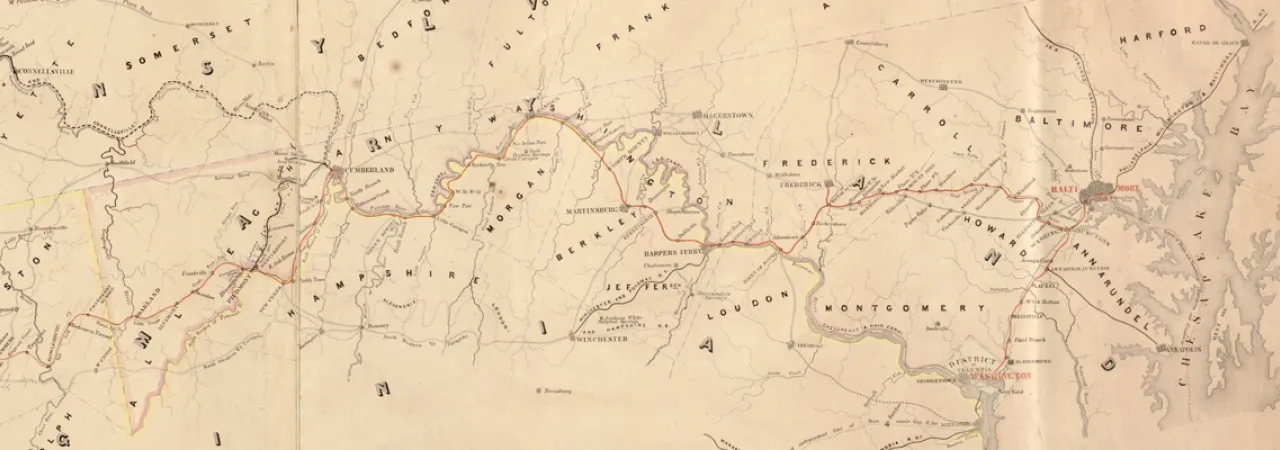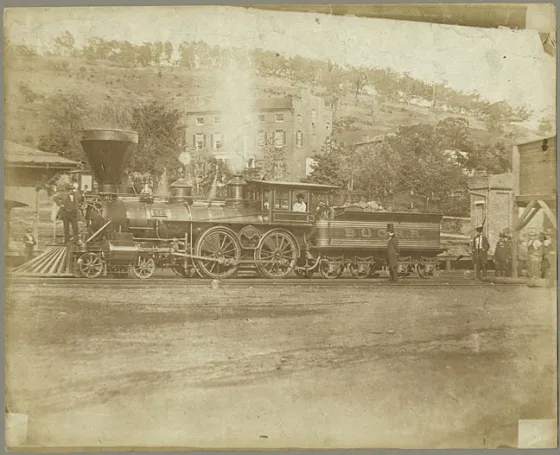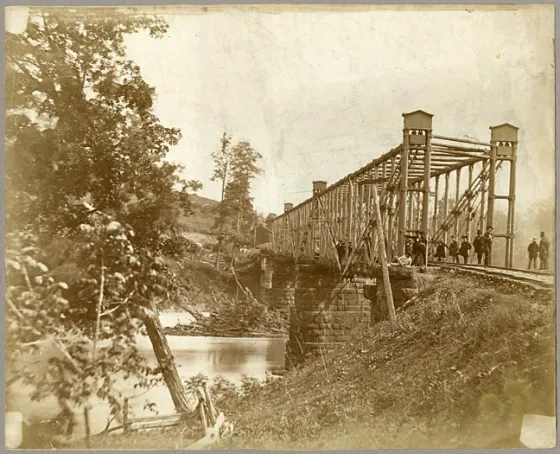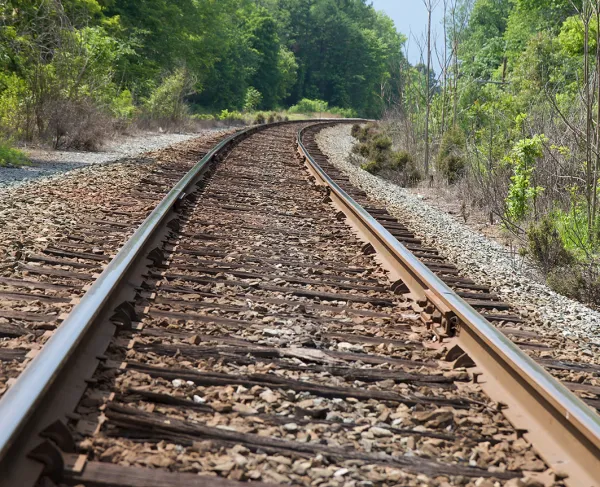
The Baltimore and Ohio (B&O) Railroad was the first railroad chartered in the United States and was the backbone for transportation in the early 1800s. The line’s construction began on July 4th, 1828. From 1828 to 1861, the B&O had expanded into thirteen states. The B&O dipped into portions of Northern Virginia, such as Winchester and Strasburg, Virginia, with Harper’s Ferry serving as the main junction to the Shenandoah Valley.

In 1859, the abolitionist John Brown led a small group of men to Harper’s Ferry, Virginia, (modern day West Virginia). They wished to seize the federal arsenal in the town, while sparking a slave uprising in the area. Their initial actions led to the seizure of a B&O Railroad bridge leading into Harper’s Ferry. Brown and his men seized an express locomotive while the capture of the bridge was underway. Amidst Brown’s actions, an African American porter was mortally wounded, the first victim of John Brown’s Raid. John Brown’s Raid was the beginning of many attacks and raids that affected the B&O throughout the Civil War era.
As a largely east-west rail line, at this time, the B&O was an important line for both the Union and Confederacy. Both sides each claimed the line as their own. Throughout the course of the war, a total of 143 raids, skirmishes, and battles directly involved the B&O Railroad. On April 18th, 1861, Union forces severed the rail line at Harper’s Ferry. Union troops in Harper’s Ferry set fire to an armory, arsenal, and a rifle factory before withdrawing from the town. Later that same evening, Virginia State Militia regained control of the area and salvaged any useful supplies.
In the Spring of 1861, Col. Thomas J. Jackson attacked portions of the B&O Railroad that dipped into the Shenandoah Valley. Jackson devastated the rail line by destroying rails, burning freight cars, and sequestering locomotives to replenish supplies for the Confederacy. By the end of 1861, 23 B&O railroad bridges were burned, 102 miles of telegraph wire had been cut down, 36.5 miles of track was torn up or destroyed, 42 locomotives were burned, 14 locomotives were captured, and 386 rail cars were stolen or destroyed. This resulted in the B&O being shut down for ten months. Restoration of the railroad continued until March of 1862, and still, the line was subjected to numerous raids, skirmishes, and battles. This resulted in the garrisoning of Union troops along the railroad to prevent any further damage to the line, as well as keep supplies in Union hands.

During the second half of the war, the B&O railroad suffered from nearly continuous raiding by Confederate forces. Poor Union leadership caused the line to suffer greatly at the hands of Confederate forces. The B&O was a strategic target for the Confederacy due to its rapid ability to transport soldiers and supplies quickly in and out of Washington, DC. Confederate leaders such as Lt. Col. John Singleton Mosby was one such leader that repeatedly took part in skirmishes along the B&O railroad.
In the summer of 1864, John Garrett, the owner of the B&O railroad, provided key intelligence to Union command on the whereabouts of Lt. Gen. Jubal Early’s army that was encroaching on Washington, DC. Garrett, along with railroad workers, reported intelligence that led to the Battle of Monocacy on July 9th, 1864. The Battle of Monocacy ended in a Confederate victory, however, the battle was considered by the Union to be the “Battle That Saved Washington,” as Early was delayed in assaulting Washington, DC. After the battle, Garrett was in correspondence with President Abraham Lincoln, who named Garrett, “the right arm of the Federal Government” for his commitment to the war effort.
The B&O railroad served as the Union’s lifeline and supply chain. The B&O provided the Union army with much-needed supplies and ushered the United States in a new industrial age that saw the rapid advancement of industrial growth that the South could not produce. Despite impossible odds against constant raiding from Confederate soldiers, the B&O served the Union efficiently and helped play a crucial role in the Union’s ultimate victory.
Further Reading:
- John W. Garrett and the Baltimore and Ohio Railroad By: Kathleen Waters Sander
- Baltimore and Ohio in the Civil War By: Festus P. Summers
- The War Came by Train: The Baltimore & Ohio Railroad During the Civil War By: Daniel Carroll Toomey





